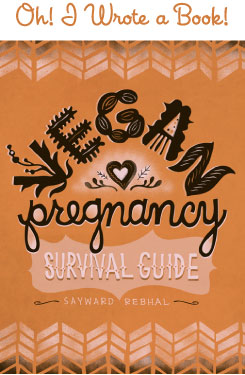Happy Earth Day everyone! In honor of this most relevant holiday, and in keeping with our Monthly Mission, I’ve written up everything you need to know, to get you started composting! This simple habit is one of the most Earth-friendly that you can develop, and I hope that you can all add it to your routine. I’d also like to thank reader Jenny, who suggested I do this article for Earth Day. So without further ado, here’s the dirt (nyuk nyuk) on composting!
Composting is a process of aerobic decomposition, which means decay in the presence of oxygen. This is an intentional and controlled biodegradation, with the purpose of transforming unwanted bio-matter into usable fertilizer. Uncontrolled break down, which is what happens in landfills, is a process of anaerobic decomposition. This is decay in the absence of oxygen, and it produces greenhouse gasses like methane. So, composting = good rot, landfill = bad rot.
But that’s not the only benefit to the practice. Sure, composting keeps biomass out of landfills and helps reduce greenhouse gas. But, that also means less energy is required for transporting waste. Think of how much fuel is burned through, just moving trash to the dump! As well, sourcing your own garden products makes you less dependent on agribusiness for fill dirt and topsoil. You’re also creating a vegan humus – something that can be tricky to purchase. And finally, you’re using natural, organic, chemical-free fertilizer. Take that, Monsanto!
Given enough time, any bio-matter will eventually break down into compost. However, home units don’t always reach high-enough heat, so some stuff should be omitted to avoid contamination. The three domestic no-no’s are meat, dairy, and house pet poop. Of course, here at Bonzai we endorse a meat- and dairy-free home in the first place! Farm pet manure is fine and safe. Here’s a more comprehensive list of compostables:
- DO compost – cardboard, coffee grounds, coffee filters, yard debris, manure, mushroom manure, fruits, veggies, beans/legumes, seaweed, eggs/eggshells
- DO NOT compost – meat/fish, dairy, bread, dog & cat poo, cloth/clothing, newspaper/office paper (but DO recycle these!), BBQ/wood ashes
The composting apparatus takes two main forms: the ‘Open Box’ or the ‘Closed Container’. Each has it’s own associated pros and cons, but either way you should aim for a duel chamber system. You want two separate receptacles, one that’s just for ‘cooking’ compost undisturbed, and one that you can continually add to. When the ‘cooking’ side is done, it can be emptied and used in the garden. Then the ‘add pile’ will move to the ‘cook’ side, and the process starts all over. Make sense?
The Open Box is the classic compost heap, often a simple homemade slatted-wood box that’s reinforced with chicken wire. These are the easiest and cheapest to construct on your own, especially if you re-use old wood and wire. Since they’re open at the top they have access to air and moisture, which is good. It’s also very easy to access and add to them – you just toss your scraps on top of the pile! But, this also means your pile is accessible to pests (and pets!), which is less desirable. Their exposed structure makes them easily waterlogged in winter storms, which can be detrimental. Finally, Open Boxes must be manually turned over, which is more difficult.
The Closed Container is usually store-bought, either a solid bin or a rotating drum. They’re nice because they’re ‘prettier’, and they won’t attract pests. Rotating drums are easier to turn over and easier to empty. But, they’re also much more expensive. Solid bins are hand-turned, just like an Open Box. And finally, Closed Containers will require additional water, which is an extra step.
These are just the general models, and there are endless variations on the themes. You know what I always say – “Be creative, and have fun with it!” I’ve heard of people using big yard waste trash cans, the plastic kind with a locking snap-top. This makes an excellent Closed Container, a low-budget twist on a rotating drum. To turn over, you just lay the trash can on it’s side, and roooooooll it around the yard. Fun!
Okay, so you’ve bought or built some sort of bin(s), and you’re ready to do this. Pick a spot that’s close to the garden, but also close to the kitchen. Be realistic! If you have to tromp across an acre to reach your compost pile, you’re less likely to make the trek, right? So put it within easy reach. If you think it’s an eyesore, maybe you can hide it behind a bush, or around the side of the house. But I say be proud and put your efforts on display! What about giving your bin a custom paint job, like psychedelic swirls or lime green high gloss? Or, you could decorate with old fake flowers and decoupaged pictures of your dream garden. You know how it goes – “Be Creative, Have Fun!”
Now remember, you want managed, contained decomposition, NOT stinky pile of rotting garbage. For a thriving microorganism community, you need air, water, ‘greens’, and ‘browns’. Air and water are easily attainable. ‘Greens’, like cut grass, manure, kitchen scraps, and fresh garden debris, are high in nitrogen and will provide protein for your micro bugs. ‘Browns’ are high in carbon, and they provide the energy for the colony. Examples include dried leaves, dead grass, straw, and sawdust/wood/bark (but not too much, because it’s very carbon-potent).
The balance between these components is the most essential aspect of composting. Most home failures result from too much ‘greens’, with not enough ‘browns’. In fact, the ideal ratio is about 4 parts ‘browns’ to only 1 parts ‘greens’. So remember, kitchen scraps are not enough – get your hands on some hay! Or, in autumn you can ‘harvest’ your dead leaves. Once they’re dry, store them in garbage bags to be your ‘browns’ throughout the year. In lieu of leaves, hay is available at most feed stores and many nurseries.
To start your compost off right, add a nice big shovelful of soil. This will guarantee a happy healthy dose of microorganisms. Volume is good, so throw as much debris as you can in there and aim for a nice big pile to generate plenty of heat. Periodically, you’ll want to turn over the mixture to maximize breakdown. You don’t need to turn your compost, but man, it sure does help. Failure to do so may result in the dreaded ‘stinky pile of garbage’. Turning serves to aerate the pile (remember, this is aerobic decomposition) and also evenly distributes moisture. If you’re not using a rotating drum, you can use a pitchfork or shovel to manually mix your compost. And come on, who doesn’t want to use a pitchfork!? So cool.
If everything goes according to plan (and I’m quite sure it will), you’ll soon reap the rewards of your toil. Finished compost is porous, water-retentive, and incredibly nutrient-rich, making it a superb growing medium. It’s pretty intense on it’s own, so cut it with dirt and watch your garden explode! Happy growing, and HAPPY EARTH DAY!!!





Pingback: 65 Common Things You Didn’t Know You Could Compost «